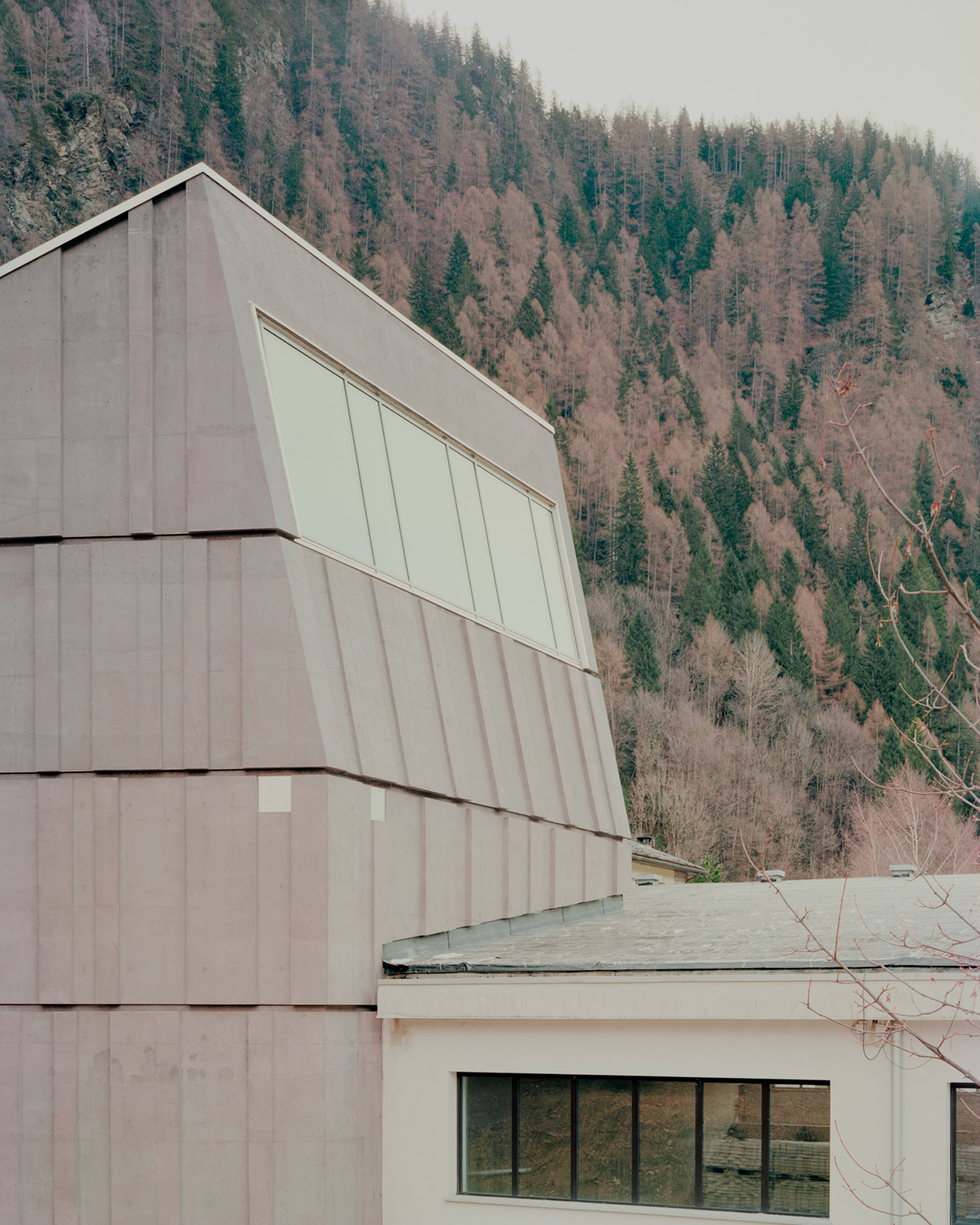
Enrico Scaramellini uses simple and sincere architecture to design the new gymnasium, employing polygonal shapes in plan, sloping roofs and pigmented concrete. The large volume is made up of different facades of different sizes, where some are inclined, encouraging a lateral view. The use of polygonal shapes, both in plan and in section, together with the sloping roof results in a volume that resembles the rocks of the landscape.
Constructively, the building is made entirely of pigmented concrete, using its materiality to express itself within its context, giving the project a metamorphic character. Small metal elements are introduced into the facades of the large sculptural volume, resembling quartz within a large rock. On the south facade, a large glass surface allows the entry of light, acting as a reflective element, marking the passage of time inside.

Spluga Climbing Gym by Enrico Scaramellini. Photograph by Marcello Mariana.
Project description by Enrico Scaramellini
The building is a large monolith with both natural and artificial features. The forests and rocks that characterize the landscape represent the concept by which surfaces are shaped and measured, establishing a symbiotic nature-artifice relationship. The plan is polygonal with a sloping roof section; the cast-in-situ pigmented concrete, the different vertically staggered faces and the varying degrees of sandblasting, although complex in construction, represent a sincere and simple architecture. A large glass surface floods the interior with light and takes on the character of a reflector that marks the fluid and unpredictable change of time.

The project works in terms of landscape with a focus on planimetric and volumetric configuration. In terms of surface, it is a small-scale intervention that builds with its surroundings, rock, forest and trees, a series of important relationships and references. There is a strong figure-ground relationship established between the project and the surrounding forest. The volume is made up of a series of sloping facades of different sizes; This plan configuration encourages a lateral perception of the volume, which is always partially perceived.
The approach to the volume from the existing access roads also emphasises this lateral view. The combination of the polygonal plan and section with the sloping roof results in a volume that resembles a rocky outcrop. A large rock rising vertically. Some tall trees, close to the project building, will be considered the element with which to measure, by comparison, the height of the new volume.
The perception will vary throughout the seasons; some of these plants will be given the vegetal apparatus that will further emphasise the relationship between the building and the mass of the natural element. A small building with a disruptive character, in which simple construction (with almost non-existent finishing works) becomes architecture; a timeless building that uses its material to express itself within its context, evoking powerful buildings, rock walls and declared geometries.
The building is made entirely of pigmented concrete, cast on-site according to five planes, each emphasised by horizontal courses. The basement is completely coplanar, while the upper levels are characterised by a geometric interplay of vertically staggered breaks of varying depths and widths.

The pigmented concrete treated with varying degrees of sandblasting takes on a metamorphic character, changing colour depending on the time of day and the surrounding weather conditions. Towards the north, through a convex angle, the building manifests itself in an imposing and vigorous manner, returning the observer's sight and mind to a large, impassable rock face.
The forest, with its trunks rising above ground level, constitutes by analogy the central concept by which the surfaces of the monolith are characterised and animated. The monolith, through the heterogeneous "in-out" movements of the surfaces and the different degrees of sandblasting of the concrete, takes on sculptural characteristics. Here and there, small square-shaped metal elements, clear and reflective, like quartz within a rock, embellish the building. Towards the south, the only large glass opening in the block emerges, which, in addition to flooding the interior of the structure with light, takes on the characteristics of a large reflector that marks the passage of time and the unpredictable change of the colours of the sky.














































